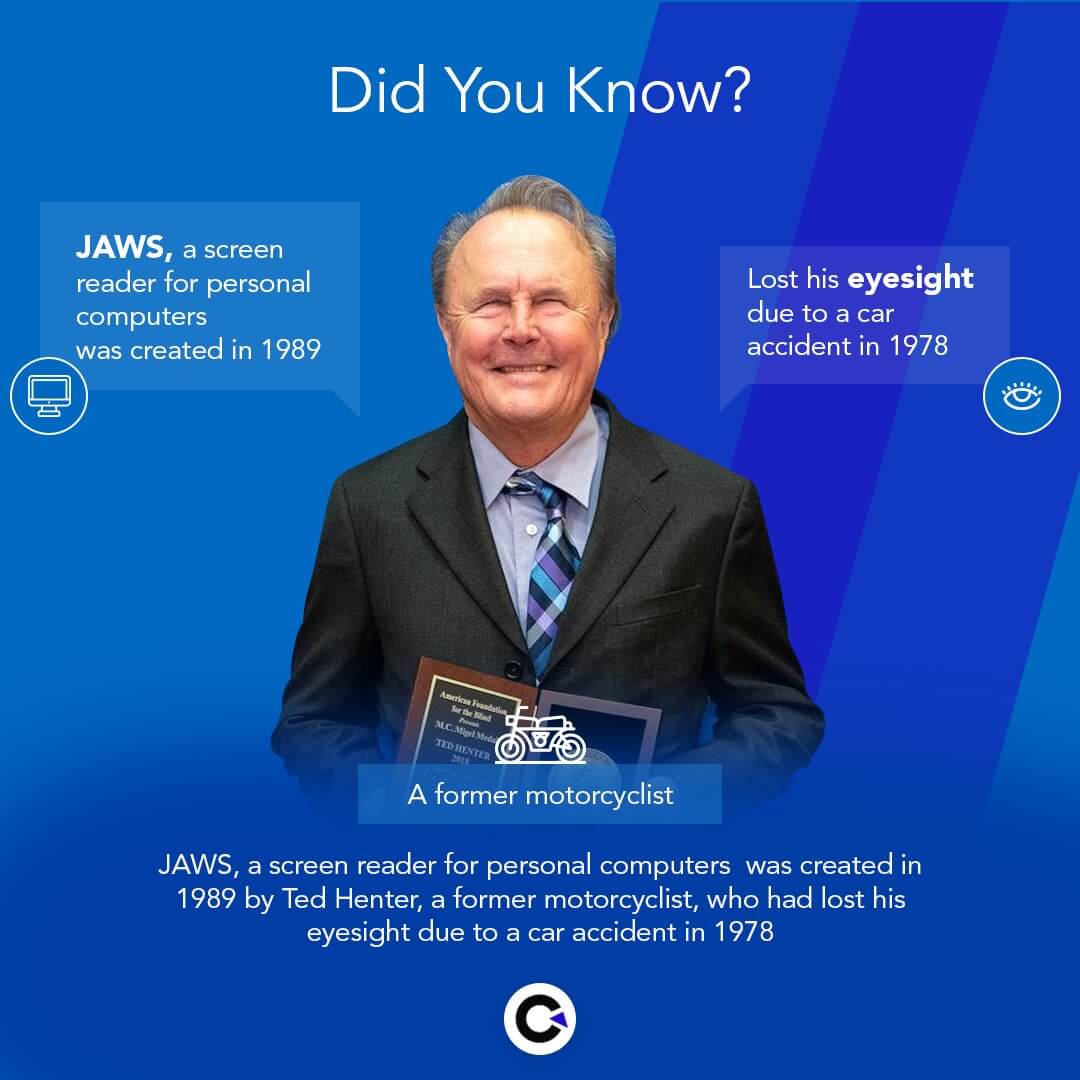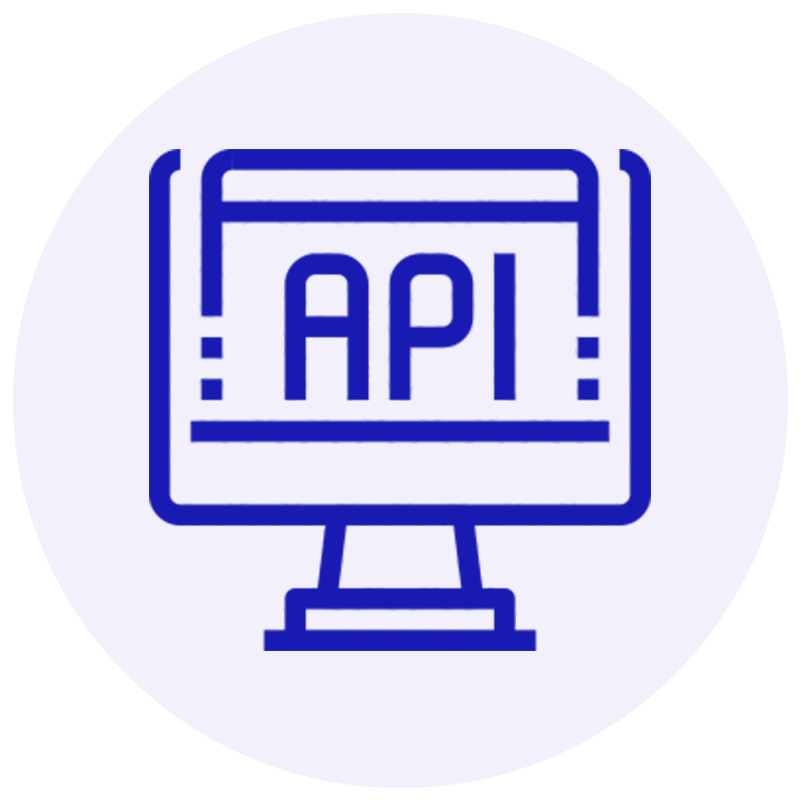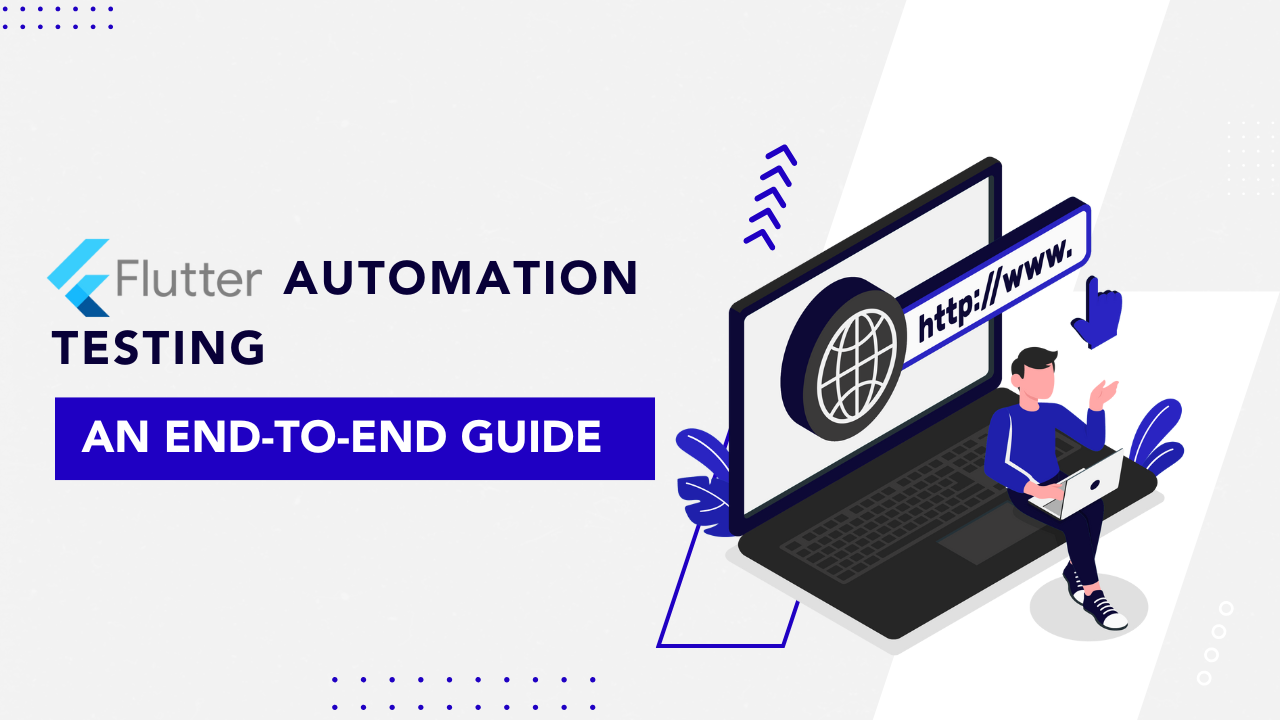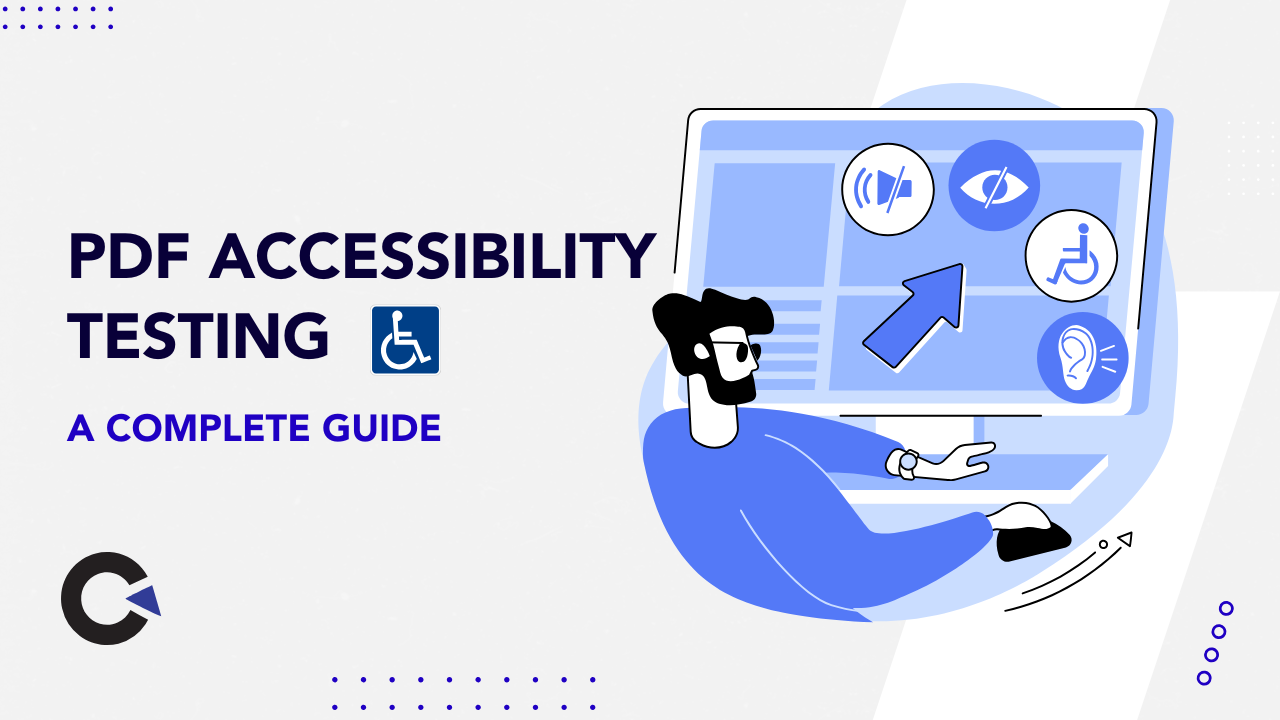
by admin | Jan 31, 2022 | Exploratory Testing, Blog, Latest Post |
There are many well-known definitions for exploratory testing (ET). Out of those, the most common one was coined by James Bach and Cem Kaner. That is, “Exploratory testing is simultaneous learning, test design, and test execution”. This definition has changed over the years to become “Exploratory testing is an approach to testing that emphasizes the freedom and responsibility of each tester to continually optimize the value of their work. As a leading QA company, we achieve this by treating learning, test design, and test execution as mutually supportive activities that run in parallel throughout the project”. Since exploratory testing can be defined in many different ways from different perspectives, it is very common for many to create a few misconceptions. So in this blog, we will be myth-busting the most common Exploratory Testing misconceptions.
Exploratory Testing is not Adhoc Testing
We are starting off with this point as viewing exploratory testing as ad hoc testing is pretty much the most famous exploratory testing misconception. If you look at both these approaches on a surface level, they might seem the same. For example, both these approaches do benefit from having an experienced tester perform the tests. But if you dig deeper, you will be able to see the differences. For starters, Adhoc testing doesn’t have any structure or proper documentation. But exploratory testing does in fact have both structure and documentation and that is our next point of discussion.
Exploratory Testing needs Planning
The most common Exploratory Testing misconception is that it can be done in any random way we desire without any plan. But in reality, exploratory testers use test charters that will prevent them from going overboard by maintaining a certain boundary. If test charters provide the boundary for the scope of the tests, then time boxing creates defined timeframes for exploration.
But the point to keep in mind is that these test charters shouldn’t be too detailed. Test charters should only help you focus up and shouldn’t become like detailed test cases. In addition to that, it will also be helpful when it comes to traceability.
Exploratory Testing requires Documentation
Now we know that creating test charters will not take as much time as creating test cases as it doesn’t need to be too detailed. So mind mapping the ideas or focus points that need to be documented can help us stick to the context and make sure we are not testing beyond the documented ideas. Likewise, mind maps can also be very helpful in identifying the steps to reproduce a particular bug as we can trace the steps taken during testing. We have covered the importance of using mind maps for exploratory testing documentation in detail. Make sure to read it for additional information. Performing exploratory testing and not having even test notes will make it very difficult to keep track of the bugs that were found, and most importantly fix them as well.
Exploratory Testing requires Training
The other common exploratory testing misconception is that people believe that it doesn’t require any sort of training and can start immediately. But just as seen in the previous points, there are various techniques like mind mapping that will come in handy during exploratory testing. So make sure to train yourself with the 5 exploratory testing techniques that we have mentioned in this blog to witness the improvements.
One of the 5 exploratory techniques is Integration testing as you should be in a position to test every module that comes your way in the way you want it to be tested. You will also start seeing better results in your exploratory testing as you gain valuable experience. So make sure to keep a learning mind when you perform the tests.
Exploratory Testing is not test-case-based testing
Though you may not have had this exploratory testing misconception, the recent points might lead you to wonder if exploratory testing is almost like test-case-based testing. But in fact, exploratory testing brings the best values from ad hoc testing and test-case-based testing to achieve more robust results. For example, though we have the test charters and time boxing elements to guide us along, the limitation of staying within the test cases alone is eliminated in exploratory testing.
The tester will have the freedom to use their experience and follow their hunches to detect bugs that would usually go untraced. Plus exploratory testing can be performed even at the very initial stages of development to find and fix the bugs at the earliest. You could visit our comparison blog of Scripted Testing vs Exploratory Testing to get an even clear idea about the distinction.
We can employ both test-case-based testing and exploratory testing
We have established the fact that exploratory testing is different from the regular scripted testing in our previous point. So using both the scripted and exploratory approach when testing the same product can be an effective way to find more bugs. Having predefined scripts based on what we know alone will never be enough. So using the knowledge we gain during exploratory testing is the best course of action.
As stated earlier, you can use exploratory testing during the initial phases of development and cut off the bugs at an earlier stage. By that time, the application will be ready for us to perform scripted testing to root out the remaining bugs. Likewise, we can also use scripted tests to attain maximum coverage and use chartered exploratory tests wherever needed to bring about the best results. Speaking of test coverage, let’s move to the next exploratory testing misconception.
Exploratory Testing isn’t about Coverage
Exploratory testing is a very subjective approach that depends on the individual tester who is in control. We would have heard many say that exploratory testing expands the test coverage. The implication here is that exploratory testing will be instrumental in finding the bugs that would usually go untraced in the conventional approach. The tester will have the option to test different scenarios and target the weak spots that have been identified instead of testing everything. So though it is possible to attain maximum coverage, it wouldn’t be necessary if you couple exploratory with scripted testing.
Exploratory Testing isn’t Troubled by Complexity
By this point, you yourself know that exploratory testing can be done irrespective of the complexity of the product. Since exploratory testing is a reactive process that is influenced by what we learn during the testing process, the complexity of the product will never be a factor. Irrespective of the approach you use, you must have ample experience and skills with the different testing techniques to keep up with the complexity. In fact, you will even get better ideas for testing a complex product because of the context you can observe and understand from the hands-on experience.
Conclusion
As a leading Exploratory testing services provider, our first step towards providing better results was clearing the common misconceptions behind the approach. Just a sweet reminder that there is no conclusive evidence or definition for exploratory testing is as of now. So don’t end up with the single known definition or any not-proven conclusion of exploratory testing. Instead, charter your learning experience in exploratory testing by understanding the common Exploratory Testing misconceptions. We believe it greatly helped us out understand what exploratory testing truly is and hope this blog will be very useful for you as well.

by admin | Jan 19, 2022 | Automation Testing, Blog, Latest Post |
Now that the digital landscape is continuously growing momentum, your website mustn’t fall behind progress, especially since consumer behavior is trickier now more than ever.
If there’s anything you should invest in your business, it’s to ensure that you’re providing the perfect website for your brand. This is because it’s not only you who’ll be using it; your customers will be there to learn more about your brand, products, and services. So if your web development and design aren’t close to perfect, it may affect your customer’s user experience.
A fantastic way to achieve a strong and effective website is through testing, code review, and site audits. With that said, it’s worth paying attention to automated testing to guide you through the development process. In essence, automated testing helps reduce risk and serves as a guide through the development stage.
For this reason, it’s best to partner up with credible automation testing companies to ensure that you’re conducting the right tests to improve your website’s performance.
Reasons You Should Consider Automated Testing for Web Development
Working with automation testing companies can provide you with a plethora of benefits. Here are some reasons you should consider automated testing right now:
Reason #1: It’s Incredibly Time-Efficient
When you integrate automated testing, you get to conduct a huge number of tests and run them at the same time. If you do this manually, it could take forever, affecting your development and design stages. With automation, you get to speed up the deployment of new features and updates and get to deliver projects just in time.
Reason #2: You Can Reuse the Same Tests
With automated testing, you’re able to use the same tests, and you can run them multiple times so you can make the necessary adjustments to your codes and design. This is because established and ready scripts are pretty handed and can help with different scenarios, especially when delivering different projects.
Reason #3: You Get to Test in Different Browsers, Devices, and Scenarios
Perhaps one of the best things about automated testing is that you get to execute cross-device and cross-browser testing to see if your website will work seamlessly on different platforms. With automated testing, you’re able to benefit from various testing coverage and scenarios, reducing risks and preparing you for different situations.
Reason #4: Utilize Regression Testing
You can reuse tests to help fuel regression testing, thanks to automated testing. This test allows you to make changes, especially with complex features and updates, enabling you to make many tests on different platforms as well.
Reason #5: You Get High Accuracy and Better Results
Unlike manual tests, which are monotonous and repetitive, automation testing is quite the opposite. With manual tests, you may miss a bug or forget a certain step, but with automated testing, you get to test frequently and get accurate results since you eliminate human error.
The Bottom Line: If You Want to Improve Your Website, It’s Best to Integrate Automated Testing
There’s no doubt that businesses are even more competitive now, especially since more businesses are claiming digital real estate. Because of this, it’s safe to say that you should produce a strong and effective website for your consumers to enjoy. However, testing is a vital component for this, and with that, it’s worth working with a credible automation testing company to ensure that your site is up to speed at all times!
How Can We Help You?
Codoid is an industry leader in QA, leading and guiding communities and clients with our passion for development and innovation. Our team of highly skilled engineers can help your team through software testing meetup groups, software quality assurance events, automation testing, and more.
Are you looking for automation testing companies? If so, reach out to us today!

by admin | Jan 27, 2022 | Software Testing, Blog, Latest Post |
Technology and its ever-evolving nature can be quite challenging to comprehend, especially if one isn’t technologically adept. Not to mention that with every innovation, new terminology comes up.
Today, we’ll be discussing the differences between web services and APIs, two terms that many tend to interchange mistakenly.
What Are Web Services?
Web services are software components that allow applications to communicate over the internet. They are like APIs that don’t require written code, but they do need additional web programming to work.
There are two types of web services: SOAP and REST. SOAP forms the base for web services that use structured data, such as XML and JSON. In this type of web service, a client accesses an endpoint, which it uses to get the data it needs. This data gets sent back to the client, using it for whatever purpose.
On the other hand, REST follows a more straightforward approach to web services. It doesn’t require any structured data and mainly functions when you only need a small and specific set of data.
What Are APIs?
Application Programming Interface (API) is a piece of code that allows new and existing software applications to interact with other applications. In addition, APIs make it possible to transfer data and content between different applications, allowing them to function the way you want them to.
You can think of an API as a way for third-party developers to access your product and build on it. If a company wants to create a new feature, it can use the API to access your company’s data.
You have likely come across this feature before. An excellent example would be the function that allows you to use your Facebook account to log in to other applications, like Spotify. Booking a flight through travel sites is also one example of using APIs in real life.
Which One Does Your Business Need?
APIs and web services sometimes overlap in that all web services are APIs, but not all APIs are web services. Furthermore, APIs can function online and offline while web services cannot.
Aside from these key distinctions, APIs and web services also differ in terms of functionality. The question now is, which one does your business need? If you’re searching for something that can perform one of the following, then you’re looking to have APIs for your business.
- Provide information about a subject matter
- Offer the ability to request information
- Bind services
What Happens Next?
The first step is to find a software developer if you don’t have one in-house. They can take your business’s idea and create an application based on it. Your team should also finalize ideas for your web service during your search.
Having a solid idea to present makes it easier to collaborate with the software developer, who will likely offer their input on improving the final product. After extensive meetings, the software developer will work on your web service, and then you will need a quality assurance (QA) company to test it out.
QA companies have the programmers and resources to test your web service for flaws during the development phase. They can also try the application before its official release, providing feedback to the software developer. Working with a QA company is a must since you don’t want your web service going live only to find out later on that it has numerous bugs and security flaws.
Ending Note
Web services are programmatic interfaces for software components utilized to connect apps, sites, and various other services over the internet. They are designed to support the exchange of data between applications, and they send, receive, and process data over the web.
If you aren’t sure if you need web services, we recommend reviewing what a web service can do to see if it fits your business requirements. Additionally, you must keep in mind that working with developers during this endeavor can also make the process easier to understand.
Should you push forth with web service development, you need to keep in mind that a QA company can ensure the successful launch of your web services. Codoid is a leading quality assurance company that strives to implement the best possible strategies to check if your web service is ready for launch. Contact us today to get started!

by admin | Jan 25, 2022 | Accessibility Testing, Blog, Latest Post |
ChromeVox is an in-built screen reader developed by Google for Chromebooks. It can also be added to Chrome as an extension even if it is running on Windows or macOS. Since Windows and macOS have their own dedicated screen readers like Narrator and VoiceOver, you might not have the need to use ChromeVox. But if you are looking to test your website on a Chromebook, then knowing ChromeVox will definitely come in handy. As a leading web accessibility testing services company, we always make it a point to master all the resourceful tools for our accessibility testing projects. So we have written this guide to help you get started with accessibility testing using the ChromeVox Screen Reader and to explore all the important ChromeVox keyboard shortcuts.
There are two ways to run ChromeVox on your Chromebook.
1. You can click on ‘Options’ that can be found on the right side corner of your Chromebook and click on the accessibility symbol.
2. Or you can use the press shortcut keys Ctrl+Alt+Z to turn on ChromeVox.
ChromeVox Keyboard Shortcuts:
Once you have got ChromeVox up and running, you can use the various shortcuts to use it effectively. We have created a table of the most important ChromeVox keyboard shortcuts that you’ll need to know by categorizing them into different categories as well.
Main Content Navigation
Skimming through a page’s content is a very common activity that most of us do. So you have to test if your heading levels have been assigned properly as it will also impact regular reading as well. Once the user finds the part they want to be read out by the screen reader, they should be able to start the reading. So use the below ChromeVox keyboard shortcuts for easily testing all these aspects.
| S. No |
Functions |
Shortcut Key |
| 1 |
Heading Navigation |
Search Bar + H |
| 2 |
Previous Heading |
Shift +H |
| 3 |
Next Level 1 Heading |
Search Bar + 1 |
| 4 |
Previous Level 1 Heading |
Shift + 1 |
| 5 |
Next Level 2 Heading |
Search Bar + 2 |
| 6 |
Previous Level 2 Heading |
Shift + 2 |
7 |
Next Level 3 Heading |
Search Bar + 3 |
8 |
Previous Level 3 Heading |
Shift + 3 |
9 |
Next Level 4 Heading |
Search Bar + 4 |
| 10 |
Previous Level 4 Heading |
Shift + 4 |
| 11 |
Next Level 5 Heading |
Search Bar + 5 |
| 12 |
Previous Level 5 Heading |
Shift + 5 |
| 13 |
Next Level 6 Heading |
Search Bar + 6 |
| 14 |
Previous Level 6 Heading |
Shift + 6 |
| 15 |
Landmarks |
Search Bar + Semicolon |
| 16 |
Pervious Landmarks |
Shift + Semicolon |
| 17 |
Start Reading From Current Location |
Search Bar + R |
We also all know that not all users would want their screen readers to read everything that is on the display. So it is extremely important for you to test the Skip to main content feature. So once the user hits the enter or spacebar key, the focus should move to the main content area. It should also be verified on each and every page of your site without fail.
Line by Line Navigation
Being able to skim through the content alone isn’t enough. So we also have to test if line by line and word by word navigation also works well with your content.
| S. No |
Functions |
Shortcut Key |
| 1 |
Next Line |
Search Bar + Down Arrow |
| 2 |
Previous Line |
Search Bar + Up Arrow |
| 3 |
Next Word |
Search Bar + Ctrl + Shift + Right Arrow |
| 4 |
Previous Word |
Search Bar + Ctrl + Shift + Left Arrow |
Interactive Elements Navigation
The tab is the primary key when it comes to navigating through the different interactive elements in the page like links, forms, edit fields, menu items, and so on. You can access the interactive element that has the focus by pressing enter or spacebar. But if you are testing if there are any broken links or if the links have a proper anchor text, you can even navigate across just the links or even get a list of the links on the page by using the mentioned ChromeVox keyboard shortcuts.
| S. No |
Functions |
Shortcut Key |
| 1 |
Forward Navigation Of Interactive Elements (Links, Forms, Edit Field) |
Tab |
| 2 |
Backward Navigation Of Interactive Elements (Links, Forms, Edit Field) |
Shift + Tab |
| 3 |
Next Link |
Search Bar + L |
| 4 |
Previous Link |
Search Bar + Shift + L |
| 5 |
Next Visited Link |
Search Bar + V |
| 6 |
Previous Visited Link |
Search Bar + Shift + V |
7 |
Show Links List |
Search Bar + Ctrl + L |
8 |
Show Form List |
Search Bar + Ctrl + F |
9 |
To Move Focus To Pop-Up And Dialog |
Alt + Shift +A |
Table Navigation
Since tables can have many rows and columns, navigation around each cell using the search bar and arrow keys could turn out to be difficult and confusing. But since we can’t leave any content on the page untested, we have specified the ChromeVox keyboard shortcuts that will help you navigate any table with ease.
| S. No |
Functions |
Shortcut Key |
| 1 |
Show Table List |
Search Bar + Ctrl + T |
| 2 |
Next Table |
Search Bar + T |
| 3 |
Previous Table |
Search Bar + Shift +T |
| 4 |
First Cell In The Table |
Search Bar + Alt + Shift + Left Arrow |
| 5 |
Last Cell In The Table |
Search Bar + Alt + Shift + Right Arrow |
| 6 |
First Cell In The Current Row |
Search Bar + Alt + Shift + Ctrl + Left Arrow |
7 |
Last Cell In The Current Row |
Search Bar + Alt + Shift + Ctrl + Right Arrow |
8 |
First Cell In The Current Column |
Search Bar + Alt + Shift +Ctrl + Up Arrow |
9 |
Last Cell In The Current Column |
Search Bar + Alt + Shift + Ctrl + Down Arrow |
Multimedia Content
There is almost no page that doesn’t have images and videos making alt text, transcripts, and audio descriptions key factors to check. You can use the shortcuts to quickly navigate to all the graphic images and test if proper alt text has been used.
| S. No |
Functions |
Shortcut Key |
| 1 |
Next Graphic Image |
Search Bar + G |
| 2 |
Previous Graphic Image |
Search Bar + Shift + G |
If there is a video on the webpage, keyboard playback controls must be available for the user to pause or play the content easily. Audio descriptions are important for videos that rely on visual cues to convey meaning.
Advantages of the ChromeVox Screen Reader:
Docked and full-screen Magnifier:
As a leading Accessibility Testing Company provider, we understand that Screen readers are not just for people who have total loss of vision. So you have to test your content with ChromeVox’s two types of screen magnifiers that will enable low-vision users to view and read the content of the page without any difficulties.
Of the two types, one is a full-screen magnifier and the other is a docked magnifier. Once the full-screen magnifier is enabled, the entire page is magnified with a zoom level that can be changed as per the need. So if the webpage isn’t optimized for this feature, then the content will start overlapping to create a bad user experience. Since the full screen is getting magnified, it should also be possible to navigate the content with ease at any given zoom level. So make sure to use the Ctrl + Alt + Arrow keys to test that as well.
Since not all users will require the entire page to be magnified, ChromeVox’s Docked Magnifier allows the users to magnify the part of the page where the cursor is. These are a few of the add-on features that are exclusive to the Chromebook that cannot be used in any other system. So make sure to test the content on your page and see if it is compatible with these features as well.
The ChromeVox Screen Reader Chrome Extension
Apart from these exclusive features for the Chromebook, ChromeVox can be added as an extension to Google Chrome on other platforms like Windows and Macs. Installing the ChromeVox extension is no different from installing any other Chrome extension. Though the extension does not have all the features the full version does, it surely has its own benefits as it offers some basic screen reader functionalities.
ChromeVox’s Speech Viewer
Once the ChromeVox Screen Reader has been turned on, the speech viewer will automatically be displayed on top of the screen. This is a great advantage in ChromeVox when compared to other screen readers such as NVDA that don’t have a separate speech viewer as it will overlap the web content.
Disadvantages of ChromeVox:
As you can see, the search bar key and the shift key are important when it comes to ChromeVox keyboard shortcuts.
For Example: Unlike other screen readers, pressing the H key without pressing the search bar key will not move to the heading levels.
But the major drawback in the ChromeVox Screen Reader when it comes to testing is taking screenshots as the content in the speech viewer will not be covered. So you would have to rely on videos for your bug reports. Videos for major bugs are fine, but it will be a cumbersome task to add videos even for small bugs.
The Definitive Mobile App Accessibility Testing Checklist for Android & iOS
Conclusion:
Apart from the few disadvantages, ChromeVox is a great screen reader for testing your content on a Chromebook. The unique ChromeVox Screen Reader Chrome extension might also turn out to be useful in rare scenarios. So we hope you are now clear on how you can use ChromeVox to get effective web accessibility testing done using the various ChromeVox keyboard shortcuts. If you are looking to test your content across various platforms and screen readers, there are various options such as JAWS, NVDA, Narrator, OKRA, Voice Over, and so on.

by admin | Jan 19, 2022 | Automation Testing, Blog, Latest Post |
Most firms in the business software industry are moving towards accelerated and agile methodologies. One of the essential specializations in these companies is automation testing, replacing manual testing. Automation is also key to the business success of the software industry.
A professional who performs automation testing has many essential skills, which their managers must know before making a particular person head of automation testing. A few of these skills are listed below:
1. The Ability to Manage and Prioritize Tests
Managers want to know that their automation testers can handle multiple assignments simultaneously. As a professional, you must know how to prioritize, which is a successful automation tester’s essential skill. Allocate the tests so that the most important ones are executed first. For example, the tests that were left incomplete during the last sprint should be worked on first.
2. The Ability to Identify and Resolve Bugs
Managers should know that a successful automation tester can identify and resolve bugs. Only when a tester can identify the bugs and fix them can the company ensure that the product will be ready for production. They should be able to write automation scripts that identify and resolve bugs.
3. The Ability to Identify and Track Bugs
Managers want to know that their automation testers can identify and track new bugs in software. The testers must track bugs effectively to resolve issues as soon as possible.
4. The Ability to Identify and Understand the Business Requirements
Managers want to know that their automation testers have an in-depth understanding of the business requirements. This is important to create practical tests and meet the business goals.
5. The Ability to Write Automation Scripts
Managers want to know that their automation testers can write scripts ready for execution. A good automation tester must have the skill of writing precise, efficient, and effective automation scripts.
6. The Ability to Investigate Bugs
Managers want to know that their automation testers can investigate the cause of an issue. As a professional in the industry, you must master the art of investigating bugs. The managers want to find someone who can create tests and resolve issues.
7. The Ability to Write Test Scenarios
Managers want to know that their automation testers can write test scenarios clearly and effectively. Automation testers should be able to write compelling and thorough test scenarios.
8. The Ability to Use Automation Tools
Managers want to know that their automation testers can use QTP and Selenium effectively. QTP, Selenium, and other types of automation tools are used to test a software package, and you must be aware of the importance of these tools.
Conclusion
Automation testing is a niche specialization in the business software industry. It is one of the essential specializations because it helps a software company save time and money. Automation testing has a huge industry, and it is growing worldwide.
Therefore, automation testing is an essential specialization that the software industry employs today. The software industry’s future depends on automation testing, which is why managers must know the skills of a qualified automation tester before offering them a job.
Codoid is an industry leader in QA. We don’t say this just to brag–we say this because it is our passion to help guide and lead the Quality Assurance community. Codoid does it all: web, mobile, desktop, gaming, car infotainment systems, and mixed reality applications. Our automation testing services will help you to test your applications across multiple platforms, devices, browsers, and wearable devices. If you need test automation services in the United States, get in touch with us now! Let us know how we can help.

by admin | Jan 7, 2022 | Accessibility Testing, Blog, Latest Post |
A screen reader is an assistive technology that helps people with disabilities such as blindness, vision impairment, and low vision. The screen reader renders the various webpage elements like the text, buttons, and images as speech and braille output. There are various types of screen readers for different environments. As one of the leading accessibility testing companies, we make it a point to familiarize ourselves with all the top tools. And JAWS is definitely one of the best options out there. So in this JAWS Testing Tutorial, we will be exploring the important JAWS Hotkeys and have a step-by-step guide to get started with JAWS for testing purposes.
Did You Know?
JAWS was created by Ted Henter in 1989 who is a former motorcyclist who lost his eyesight due to a fatal car accident in 1978.

Why JAWS?
Jaws (Job Access With Speech) is the most popular screen-reading tool available in the market. It can be used to read the content in documents, web apps, emails, eBooks, and so on. It is available in over 10 different languages and has multilingual Eloquence & Vocalizer expressive synthesizers that enhance the overall experience. It helps a visually disabled user to read the content by just using the standard keys, has skim-reading capabilities, and has screen magnification options that make it a complete package. So, we can use JAWS without any second thoughts to ensure that the web pages have been designed according to the accessibility norms and regulations.
How to Install JAWS?
The installation process we will be covering is for a Windows machine.
- Download the latest version of JAWS from their official website.
- Open the downloaded exe file.
- Click on “YES” in the popup dialog box that appears.
- Click on the checkbox to accept the agreements and click “Install”.
- Once the installation has been completed, close the window and restart the computer when prompted.
Now that we have seen the installation process, let’s take a look at the JAWS Hotkeys you’ll need to know.
JAWS Hotkeys/Keyboard Shortcuts:
| S. No |
Functions |
Shortcut Key |
| 1 |
Start Reading |
Insert+Down Arrow Key |
| 2 |
Stop Reading |
Ctrl |
| 3 |
Heading Navigation |
H |
| 4 |
Direct Heading Navigation (H1 To H6) |
1 To 6 |
| 5 |
Landmarks |
R |
| 6 |
To Go To Main Content Region |
Q |
| 7 |
Tables |
T |
| 8 |
Data In The Table |
Ctrl+Shift+Right/Left/Up/Down Arrow Key |
| 9 |
List |
L |
| 10 |
Items In A List |
I |
| 11 |
Previous Line |
Up Arrow |
| 12 |
Next Line |
Down Arrow |
| 13 |
Previous Word |
Left Arrow |
| 14 |
Next Word |
Right Arrow |
| 15 |
Links And Form Controls To Navigate Forward |
Tab |
| 16 |
Links And Form Controls To Navigate Backward |
Shift + Tab |
| 17 |
To Activate Links And Form Controls |
Enter/Space |
| 18 |
Select From A Group Of Radio Buttons |
Up/Down Arrow Key |
| 19 |
To Submit A Form |
Enter |
| 20 |
To View The History Of Speech Viewer |
Insert+Space+H |
| 21 |
Page Refresh |
F5/Shift+F5 |
| 22 |
Select And Deselect Checkboxes |
Space |
| 23 |
Go To Graphic |
G |
| 24 |
Unvisited Link |
U |
| 25 |
Visited Link |
V |
We have listed only the most important JAWS Hotkeys you’ll be needing here. If you can’t find a JAWS keyboard shortcut combination you are looking for or want to explore all the JAWS Hotkeys, kindly use this file.
How to perform JAWS testing?
To test a website using JAWS, you have to open a browser and navigate to the website you’d like to test, and start using JAWS. Though it sounds simple, you might feel lost and not know what to do to get conclusive results. Thanks to our years of experience in providing the best web accessibility testing services to all our clients, we have created this list that will help you get started with JAWS testing.
Navigation
Being able to access the entire page and understand the content is one of the most basic actions that every user must be able to do. You can check that by navigating the page using the TAB key to ensure that all interactive elements receive tab focus. Also, verify if non-interactive elements don’t receive tab focus. Check if the focus order is from left to right or right to left.
Just like how we try to skim through the article by seeing the headings to get an idea, people using JAWS should also be able to do that. Since the screen readers can’t convey the visual representation, make sure to check the heading tag’s flow as if it is not in order from H1 to H6.
Once you’ve checked that, move down the page using the down arrow key and observe if all the content is read properly in a meaningful sequence without any repetitions or sections getting skipped. You also have to make sure that everything works well when going back to the previous lines using the up arrow key.
Multimedia Content Alternatives
Websites don’t shy away from using various multimedia content like photos, videos, and so on to make an impact. As a first step, verify if all the images receive focus. If they do, check the alt text (alternative text) and see if it is relevant and if it describes the image well enough.
Videos that have voiceovers or dialogues will not be much of an issue as it can be understood by listening to the audio. But if the video has burnt in the text without any voice-over, then you have to make sure to add a transcript that can be read by JAWS for the user to understand. Likewise, if the video is entirely visual, you can add an audio description to make it possible for the user to get at least an idea. It is recommended to not have videos auto-play when the site is opened. So it must be possible to control the playback of the videos using your keyboard.
Videos that have voiceovers or dialogues will cause much of an issue as it can be understood by listening to the audio. But if the video has burnt in the text without any voice-over, you have to make sure to add a transcript that can be read by JAWS for the user to understand. Likewise, if the video is entirely reliant on the visual, you can add an audio description to make it possible for the user to get at least an idea. It is recommended to not have videos auto-play when the site is opened. So it must be possible to control the playback of the videos using your keyboard.
Other Content Types
Internal and external links are very common on all web pages. So ensure that the change of context is clear and avoid vague lines like ‘Click Here’ or ‘Read More’ out of nowhere.
If there are any lists on the webpage, then it will be read properly only if the content has been fed as an ordered or unordered list. Likewise, if there are any tables, you should check if JAWS reads all the content with the respective rows and columns using standard keys.
Check if the table row and column headers are read out for each table cell to make it easy to understand. Verify if all form fields, links, and buttons are accessible when using the space/enter key.
Avoid Visual Reliance
It’s a common practice to make certain words, phrases, or even lines appear bold to emphasize their importance. But since they are only visual cues, they will not be picked up by the screen reader. So make sure to use ‘strong’ and ’em’ tags when needed. The same applies to any color variations used for the same purpose.
Yes, Captcha is an important feature in a website. But that doesn’t mean you have to use only visual options as it will not be possible for JAWS to pick it up.
Though flashy signs and calls to action are of the past and can no longer be found on many websites, it is still important to check for them. JAWS will have a tough time if an image with the words download is hovering over a vague hyperlink text like ‘Click Here’.
General JAWS Testing Checks
- Make sure if your page has a bypass block, the main content, and a landmark region.
- Verify if all the ARIA attributes have been implemented properly.
- Ensure that there are no black hat SEO techniques such as using hidden text to boost ranking as it will disrupt JAWS.
- Check if all the content is in a single language and if there are any different languages used, do mention it in your code to avoid confusion. It is also a good practice to use a language attribute to mention the language.
Conclusion
We hope you have found this JAWS Testing Tutorial and the JAWS Hotkeys to be helpful and now have an idea of how to test your website’s accessibility by using JAWS. You can even check out our blog that explains how you can easily test your website for accessibility. Though those easy checks will not be enough, it is always good to get started as you yield the twin benefits of fulfilling a person with disabilities their right to information and reaching a wider audience.

























